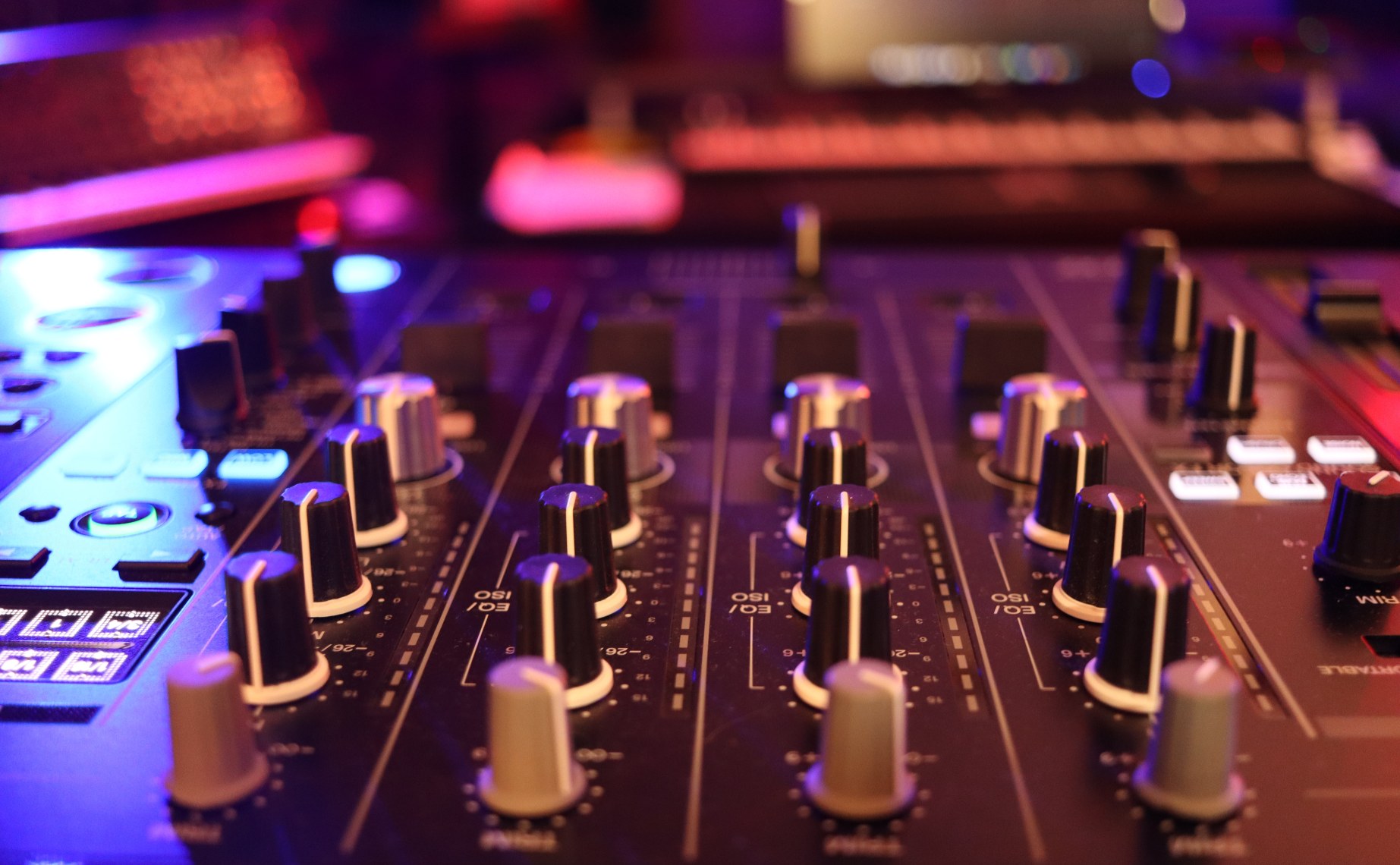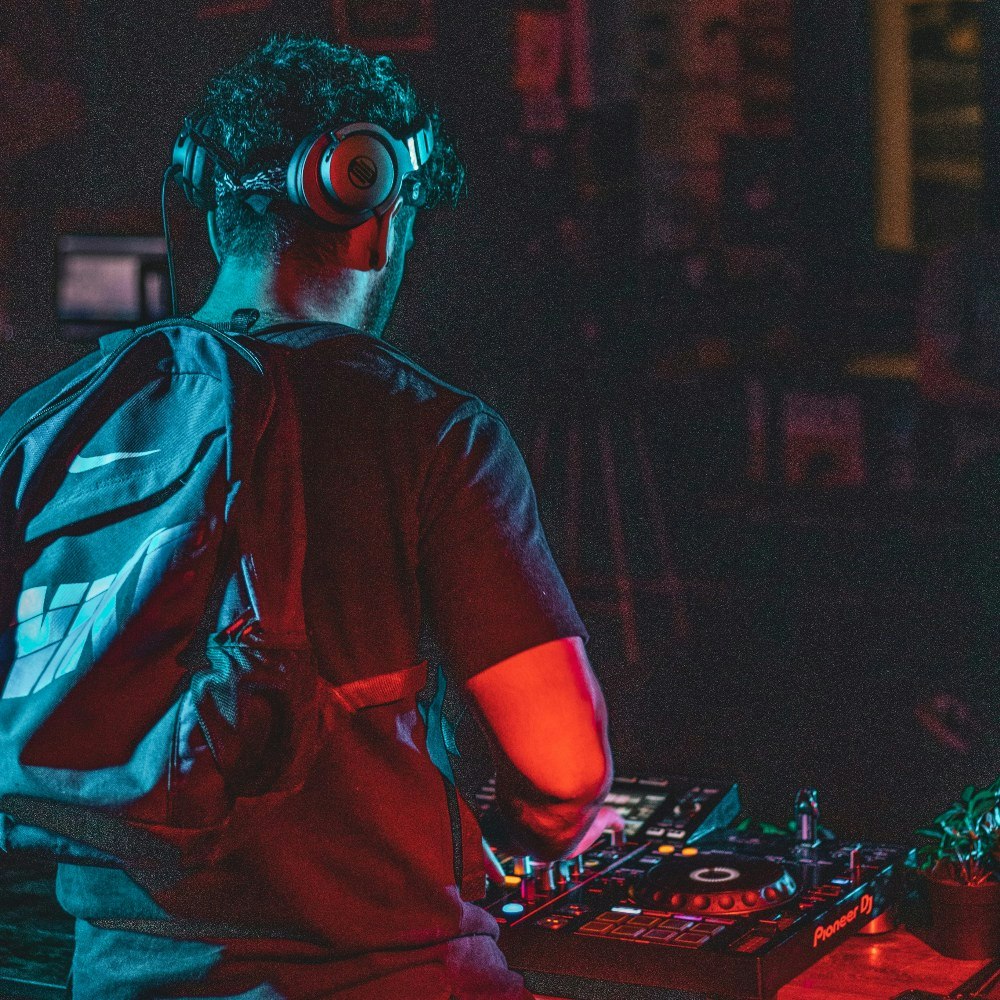
■ Features
Whether you’re looking to improve mixing Drum and Bass, or starting from scratch completely, this guide will help you structure your set and master tricky transitions.
Drum and Bass is characterised by it’s fast pace, thundering bass-lines and intricate percussion, making it really fun to play and mix.
However, DJing Drum and Bass isn’t easy. To get to grips with mixing it, you’ll first need to gain a working understanding of how Drum and Bass tunes are structured. Then you can move onto how to structure a DNB set, before tackling some drum and bass practice transitions. So, let’s get started.
To get the best results from your mix, you need to understand how drum and bass tracks are structured.
Drum and bass tracks are usually made up of five key layers:
Layering is the process of arranging these sounds so they work together to create a full sounding mix.
You need to consider each of the above mentioned layers when you’re attempting to mix DNB, each element can be mixed in, mixed out, chopped around and cut - there’s a huge amount of opportunity to get creative with each transition.
We’ve compiled some beginner Drum and Bass mix techniques which should help to get you feeling more comfortable behind the decks, opening you up to further experimentation and exploration in your DJ sets.
When you think of Drum and Bass, you probably think of intense sounds which lend themselves to fairly rough cut mixes in DJ sets. However, being able to pull off a seamless mix will prevent your sets from becoming jarring.
Looking back, at how Drum and Bass tunes are structured, we typically see intense bars of bassline mixed with percussion which are followed by breakdowns where all you can hear is melody or vocal samples - mixing over these breakdown moments, by bringing in a new percussion or bassline from a different track can really spice up your DJ set.
When practising mixing over breaks, step 1 and 2 are the same as when you’re attempting a seamless mix - you need to select your music and make sure they’re perfectly synced. Just be warned that beatmatching during the break, with just a layer of percussion playing, is much trickier than when you’ve got more elements to listen to.
When it comes to the actual mix, you want to start and finish this before the breakdown ends - you don’t want to get caught up in the bassline or that will totally destroy the effect you’re going for. A good tip is that you can loop the breakdown if you need more time. It’s important that you know the tracks you’re mixing well, and you know when the breakdown is coming in and coming out, as that’s your window of opportunity.
A cut and switch mix will achieve a choppy effect which you’ll definitely recognise from listening to Drum and Bass DJ sets. This is a distinctively DNB move, it’s one of the few genres in which chopping tracks up is so satisfying.
To attempt a cut and switch mix, your mixer needs to have a crossfader. Or, if you’re learning how to DJ on a laptop, your mixing software needs to have a digital crossfader.
Once again, to achieve this mix, you need to start off with your two tracks perfectly synced and beatmatched.
Once your two tracks are playing together, in the mix, you can perform a cut and switch mix by flicking your crossfader quickly to track 2, and then back to track 1 - Hence the name ‘cut and switch’.
This is a fun Drum and Bass mixing technique to get creative with, you can experiment with catching just a few moments of the second track, or you can flick back and forwards multiple times, to catch certain parts of the track. Cutting and switching is a great way to tease the next track you’re going to play. Rather than introducing the new track gradually, like with a seamless mix, you can use the cut and switch technique to make your mix a bit rougher and varied.
The best time to cut and switch is generally when there’s only percussion audible in track 2. However, cutting during vocals and melodies can also sound either dramatic and fun, or it can sound jarring - play around and see what works for the particular tracks you’ve selected.
One of the most important aspects of mixing is being able to structure your set in an intelligent way that keeps the audience engaged and excited. It’s easy to get lost in the moment, lose track of time and start playing whatever you want. It’s easy to forget about how you started and how you are going to end. It’s easy to get caught up in the scene and play a bunch of new tunes that are fresh out because it feels like the right thing to do.
The first element you want to consider when structuring a set is the vibe. Just like any other type of music, drum & bass has a wide range of vibes that can be interpreted through different styles and tempos. Vibes include smooth or groovy (liquid), dark or scary (techstep/neurofunk), fun and energetic (jump up), soulful or emotional (intelligent) and many more.
A well-structured DJ set will include all these elements, whether it’s a mellow liquid set full of smooth beats and soulful vocals, or an energetic techstep set full of dark atmospheres and evil basslines.
We’ve compiled some tips to help make your D&B DJ set varied and engaging:

Mixing Drum and Bass is one of the most difficult genres to master and learn. As a DJ playing DnB, you have a lot of responsibilities, mainly because the key of DnB is about consistency and maintaining structure. So with that in mind, how can you practice mixing to get better at this genre? If you don’t have access to DJ decks at home, you can book a DJ studio with Pirate and pay by the hour, across the UK, Germany and US. All of Pirate’s studios come equipped with the latest industry-standard decks to help get you club-ready.
